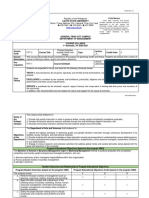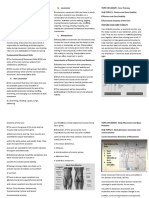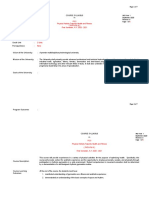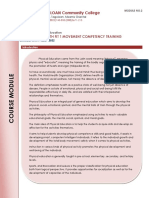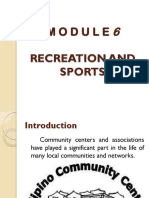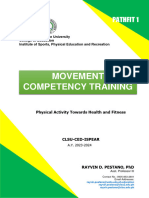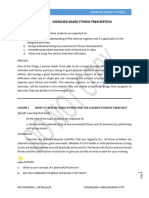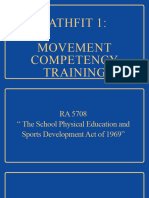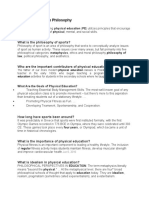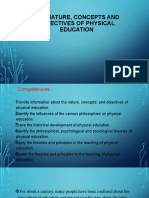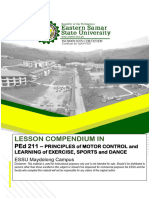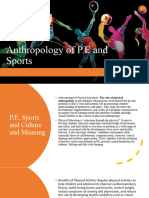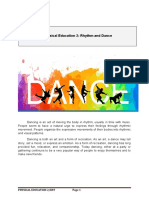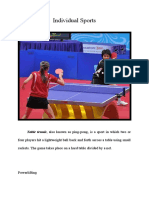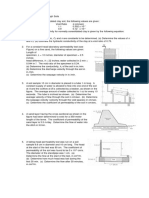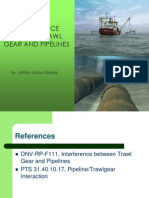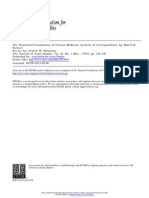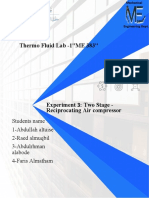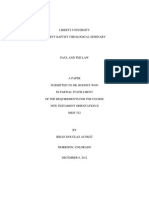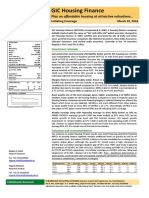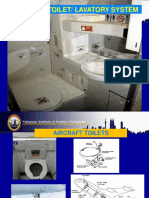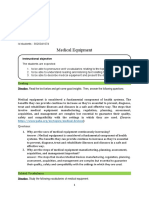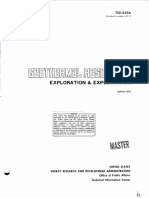100% found this document useful (1 vote)
491 views13 pagesPhysical Education Evolution
The document provides an overview of the history and development of physical education. It discusses physical education in primitive times, ancient oriental countries like China and India, Greece, the Dark Ages, America, and the Philippines. It also outlines the objectives of physical education including physical, social, emotional, and mental development. Finally, it describes the components of a physical education program including the regular class program, extra-class program, and defines physical fitness.
Uploaded by
Commanda, Clarence kateCopyright
© © All Rights Reserved
We take content rights seriously. If you suspect this is your content, claim it here.
Available Formats
Download as DOCX, PDF, TXT or read online on Scribd
100% found this document useful (1 vote)
491 views13 pagesPhysical Education Evolution
The document provides an overview of the history and development of physical education. It discusses physical education in primitive times, ancient oriental countries like China and India, Greece, the Dark Ages, America, and the Philippines. It also outlines the objectives of physical education including physical, social, emotional, and mental development. Finally, it describes the components of a physical education program including the regular class program, extra-class program, and defines physical fitness.
Uploaded by
Commanda, Clarence kateCopyright
© © All Rights Reserved
We take content rights seriously. If you suspect this is your content, claim it here.
Available Formats
Download as DOCX, PDF, TXT or read online on Scribd
/ 13
